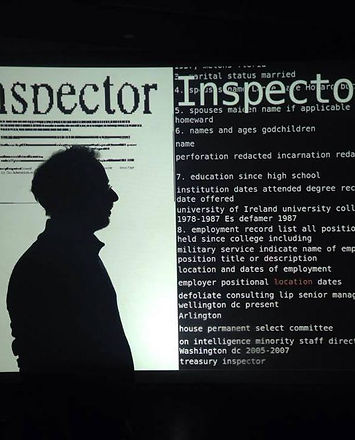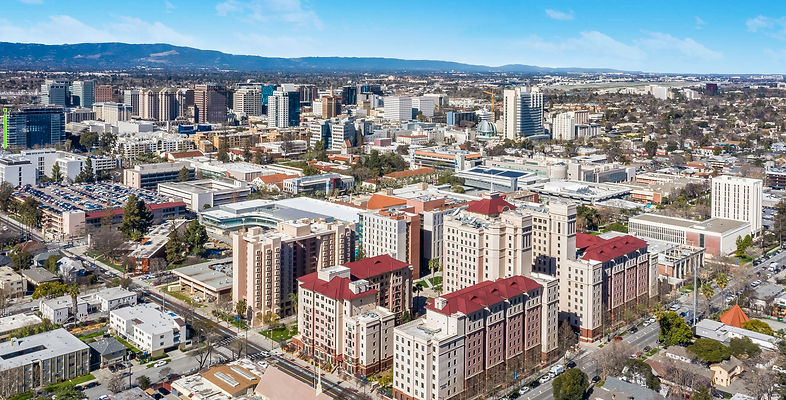
#SJSUHACKATHON
Open Panel Speakers

Dr. Tamara Kneese
University of San Francisco
Platform Temporality
Social media platforms were not originally designed for long-term use and intergenerational inheritance, but they have become sites for mourning and memorialization. I consider the temporal incompatibilities of startup culture— with its focus on real-time updates, fast-paced innovation, and short-term gains— and platforms' increasing intervention in the most profound aspects of human existence.
Tamara Kneese is an Assistant Professor in the Department of Media Studies and Program Director of Gender and Sexualities Studies at the University of San Francisco. Her work focuses on the affective, embodied, and sacred dimensions of media and technology. Her book about the platform infrastructures of digital afterlives is under contract with Yale University Press. Other aspects of her research touch on feminist science and technology studies, digital care work and labor practices, structural inequality in Silicon Valley, and social media histories.
Dr. Marie Saldaña
Stanford University
Endogamy in Northeastern New Spain: Network Visualization and Beyond
Marie Saldaña is interested in digital media as a means of exploring the intersections of historical research and creative practice. She received her Ph.D. in Architecture from UCLA in 2015, and currently works at Stanford University where she supports digital history as a member of the library’s Center for Interdisciplinary Digital Research (CIDR).
From the founding of Saltillo and Monterrey in the late 16th century through the signing of the treaty of Guadalupe Hidalgo in 1848, northeastern New Spain/Mexico (an area which included Texas) was a remote northern frontier subject to constant warfare with hostile Indian tribes, with settlers often on the losing side. The sparse population of criollos was concerned with limpieza de sangre and preserving family land holdings, while outside marriage prospects were scarce. The result was a self-conscious, close-knit, overwhelmingly endogamous society. How can such family networks be understood within the historical context of the period? What began as an attempt to visualize the complex web of relations in one family tree led to an encounter with the limitations of conventional network visualizations and exploration of possible alternatives, in an attempt to represent multidimensional values within the network paradigm.

Prior to her appointment at USF, she received a Ph.D. in Media, Culture, and Communication from New York University, an M.A. in Social Sciences and Anthropology from the University of Chicago, and a B.A. in Anthropology from Kenyon College. Her work has been supported by the Mellon Foundation, the American Council of Learned Societies, the Data & Society Research Institute, the Intel Science & Technology Center for Social Computing, and the Consortium for History of Science, Technology, and Medicine.

Abram Stern
University of California Santa Cruz
OCR: Reading Against the Grain
This talk will briefly introduce an ongoing art project, “Operational Character Rendition (OCR)”, which operates on a collection of low resolution documents published by the Senate Select Committee on Intelligence. Instead of producing a stable, legible corpus, OCR centers the work of document analysis as a site of poetics, apophenically slipping between sense-making and nonsense-making. Through this project, I will propose methods that center process as a site of inquiry.
Abram Stern (aphid) is an artist and scholar whose work focuses on public archives, surveillance, and metadata. Much of his work builds upon collections of government-produced media, interrogating both the material produced by public bureaucracies and the technologies and infrastructures that mediate our experience of it. His work has been exhibited at Real Art Ways, the Beall Center for Arts and Technology, Works|San Jose, the McDonough Museum of Art, New Langton Arts and various online fora. Abram is a PhD candidate in Film and Digital Media at UC Santa Cruz.
Rachel Midura
Stanford University
Early Modern Historical Networks
Digital projects with premodern data involves working with multilingual, sparse sources with ambiguous reconciliation to authority files. This talk will briefly introduce the Grand Tour and Early Modern Mobilities projects and discuss the value and challenges of using and producing historical datasets with freely available tools such as Palladio, Recogito, and Geonames.
Rachel Midura is a history PhD Candidate and senior graduate fellow at the Center for Spatial and Textual Analysis at Stanford University. She is currently at work on her dissertation, "Masters of the Post: Northern Italy and the European Communications Network, 1530-1730." Rachel approaches the seventeenth century as an information age created by the printing press and the European postal network. She revisits traditional social, cultural and material historical approaches in order to incorporate twenty-first century understanding of media and social networks. She is dedicated to increasing the accessibility of historical knowledge through digital
curation and annotation, as shown by work with related collaborations, such as the Networking State Archives and Grand Tour Projects.


Dr. Yoon Han
San José State University
Biometric Data Arts using Fingerprint and Iris Data
This talk will focus on two biometric data artworks: Digiti Sonus (2012-2013) and Eyes (2018). Digiti Sonus is an interactive fingerprint sonification or interactive sound installation that transforms human's fingerprints into musical sound. The idea is to allow the audience to explore their own identities through unique sound generated by their fingerprint patterns based on algorithmic computing and a physical device. Eyes is an interactive art installation and a series of biometric data artworks with my previous artwork Digiti Sonus. It's an interactive biometric data art that transforms human's Iris data into musical sound and 3D animated image.
Rick Kos
San José State University
Putting your Story on the Map: An Exploration of Esri's Story Maps Platform
Esri is a California-based company that makes geospatial analysis software which links map information with database information. Esri's Story Maps platform provides an easy-to-use set of templates to create your own personal Story Map to tell any story you wish, using maps as the foundation. Take viewers on a walk through your neighborhood, show off your favorite places in your community, or highlight an important issue that you want to share with the world.
Rick Kos, AICP is a certified urban planner and faculty member in SJSU's Department of Urban and Regional Planning. He enjoys collaborating with students to help them become empathetic, adaptable, and forward-thinking world citizens committed to fostering equitable, safe, efficient and sustainable cities.

Yoon Chung Han is an interactive media artist, award-winning interaction designer, and educator. Over the past ten years, she has created a wide range of interactive 2D/3D audiovisual art installations including biologic art, data visualization and sonification, generative art, and audiovisual interface design. Her recent research focus was on multimodal interactions using body data, in particular on creating a personalized experience in media arts using biometric data visualization and sonification. She earned her bachelor's and the first Master's degree at the Seoul National University, and her second Master's degree at Design | Media Arts, University of California, Los Angeles. She holds Ph.D. in Media Arts and Technology at the University of California, Santa Barbara. She is currently an assistant professor in the department of design at San Jose State University.

Rhonda Holberton
San José State University
No Unreal Thing Exists
Rhonda Holberton’s interdisciplinary art practice illuminates the politics of the corporeal body navigating through virtual space. In this presentation Holberton will discuss her recent projects utilizing networked VR designed to trigger subtle interactions of electrons between biological and digital systems, a speculative cosmetic company whose mission is focused on the potential of products to create distributed performative action, and collaborative image making with Neural Networks.
Rhonda Holberton holds an MFA from Stanford University and a BFA from CCA. Her multimedia installations make use of digital and interactive technologies integrated into traditional methods of art production. In 2014 Holberton was a CAMAC Artist in Residence at Marnay-sur-Seine, France, and she was awarded a Fondation Ténot Fellowship, Paris. Her work is included in the collection of SFMoMA and the McEvoy Foundation and has been exhibited at CULT | Aimee Friberg Exhibitions, FIFI Projects Mexico City; Yerba Buena Center for the Arts; Berkeley Art Center; San Jose Institute of Contemporary Art; and the San Francisco Arts Commission. Holberton taught experimental media at Stanford University from 2015-2017 and is is currently Assistant Professor of Digital Media at San Jose State University. She lives and works in Oakland.
